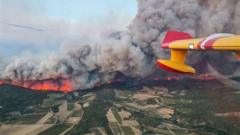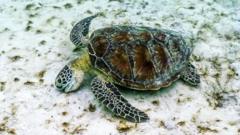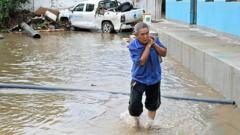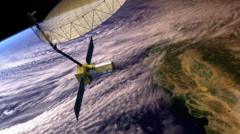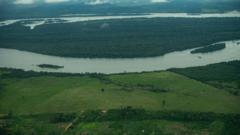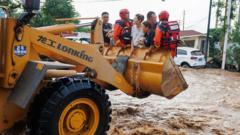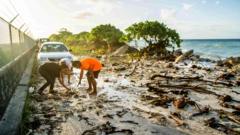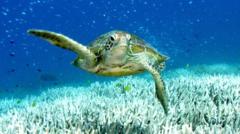The world's largest iceberg, known as A23a, is nearing South Georgia, a vital habitat for penguins and seals, creating concerns among scientists and wildlife experts.
Giant Iceberg Threatens South Georgia: Penguins and Seals at Risk
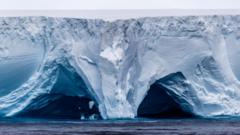
Giant Iceberg Threatens South Georgia: Penguins and Seals at Risk
A colossal iceberg is on a collision course with South Georgia, posing a significant threat to local wildlife.
The world's largest iceberg, A23a, has set its sights on South Georgia, a remote British territory revered for its rich wildlife. Currently situated around 173 miles (280 km) away from the island, this massive iceberg aids in the survival of distinct penguin and seal populations that inhabit the region. Historically, icebergs similar to A23a have resulted in deadly consequences for these creatures. Reports suggest that when a previous iceberg grounded in 2004, it blocked vital feeding access, leading to numerous deaths among penguin chicks and seal pups.
As Captain Simon Wallace from the South Georgia government vessel Pharos states, “Icebergs are inherently dangerous. I would be extraordinarily happy if it just completely missed us.” This sentiment reflects the apprehension felt by scientists, sailors, and fishermen, who are continually monitoring the iceberg's path through satellite imagery.
A23a, which split from the Filchner Ice Shelf in Antarctica back in 1986, became caught in an oceanic vortex until it broke free this past December. Its journey towards South Georgia is accelerated by warmer waters melting its massive cliffs, reaching heights of up to 1,312 feet (400 meters)—greater than London's Shard skyscraper. Recent satellite images show that A23a has already reduced in size from its original 3,900 square kilometers to approximately 3,500 square kilometers, slightly smaller than the English county of Cornwall. As pieces of ice continue to break off, scientists note that A23a may break into smaller segments that could drift around South Georgia for extended periods—a phenomenon described as “floating cities of ice.”
Repeated encounters with icebergs have made the waters around South Georgia hazardous for both wildlife and local fisheries. Marine ecologist Mark Belchier shares insights on the region often referred to as “iceberg alley,” wherein the potential for iceberg impacts is a reality for both marine life and fishing operations. Recent encounters with the A76 iceberg in 2023 further proved alarming for fishermen, emphasizing the need for adaptive strategies in the face of shifting sea conditions.
With glacial retreat and changing ice conditions becoming more prevalent, the presence of enormous ice structures like A23a in the Southern Hemisphere is likely to escalate. Interestingly, research teams, such as those on board the Sir David Attenborough vessel, have seized opportunities to study these mighty ice formations up close, gathering crucial data on their environmental impact. Laura Taylor, a PhD researcher, collected samples of meltwater from A23a to analyze how the iceberg's nutrients and chemicals may influence the carbon cycle.
Beneath the surface of what initially appears to be just giant masses of ice lies a significant ecological concern: the ability of meltwater to alter ocean conditions and potentially sequester carbon from the atmosphere. As the iceberg continues its ominous approach towards South Georgia, the ramifications on local wildlife and broader environmental systems remain uncertain, holding countless implications for both marine ecosystems and ongoing climate change discourse.




